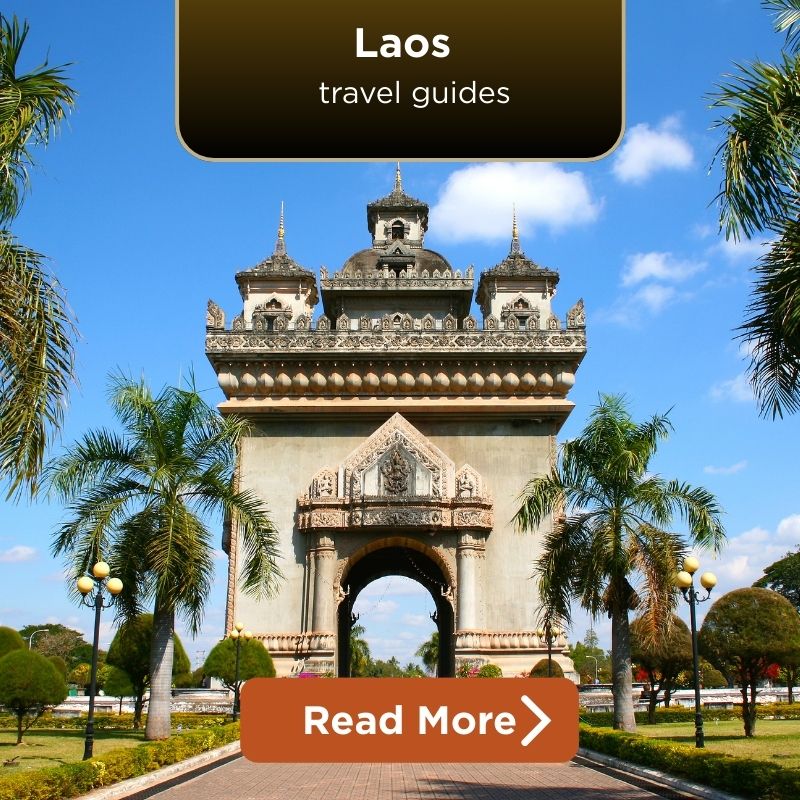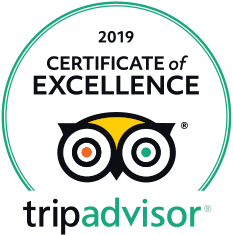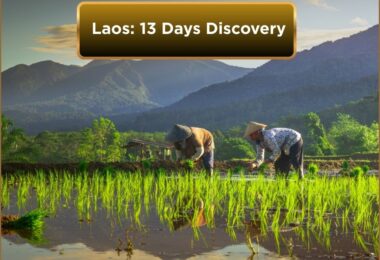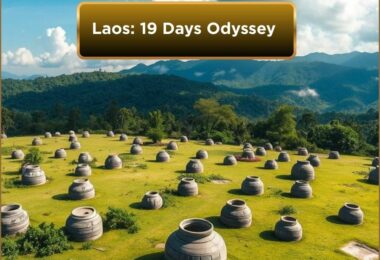The Cultural Roots of Larb: From Rituals to Restaurant Menus
In Laos, larb is a tradition that binds people together. From rural villages to elegant city restaurants, laap laos holds a sacred place in daily life, celebrations, and community gatherings. This flavorful lap dish—also known as laotian salad—symbolizes more than sustenance. It represents luck, unity, and the spirit of togetherness.
During Pi Mai (Lao New Year), no feast is complete without larb on the table. The word “laap" itself sounds similar to prosperity/luck in Lao, which is why it’s a must-have dish in every auspicious celebration. Traditionally eaten with sticky rice and shared among family members using hands, larb embodies the values of hospitality and communal joy that define Laos.
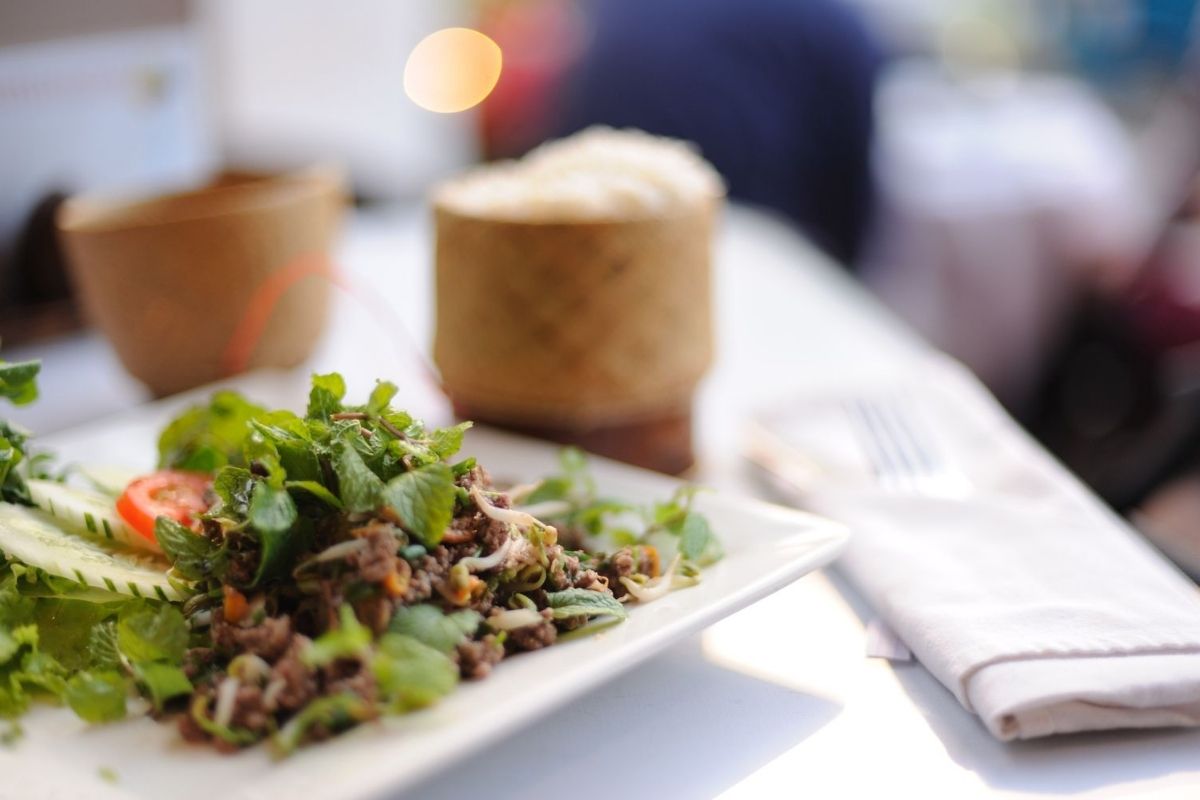
Larb in Pi Mai (Source: tripsavvy)
Anatomy of a Perfect Laos Larb: Ingredients & Taste Breakdown
So, what makes a perfect Laos Larb? It’s all in the balance—the collision of bold, bright, and earthy flavors dancing in every bite. A great laos food larb is never overpowering but always unforgettable.
At its core, traditional larb combines freshly ground meat (often pork, chicken, duck, or even buffalo) with fermented fish sauce (padaek), fresh chili, chopped herbs, and a squeeze of sharp lime juice. But what truly sets it apart is the nutty crunch of roasted sticky rice powder—a genius Laotian touch that gives the salad its distinctive texture and aroma.
Whether served warm or at room temperature, this herbal meat salad delivers a stunning blend of spicy, sour, salty, and umami. Each variation tells a different story—from the fire of Isaan-style to the subtle bitterness in rural Hmong recipes.
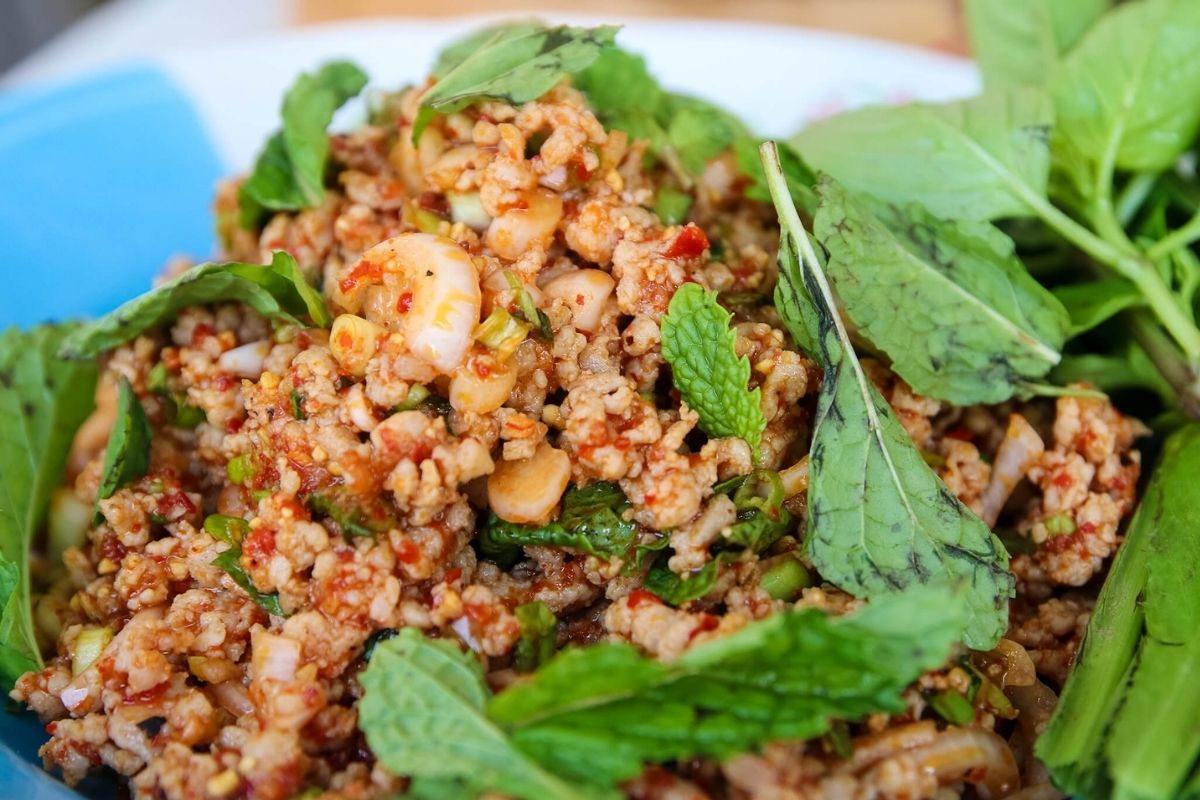
Laos Larb (Source: eatingthaifood)
Variations Across Laos: From Rustic to Refined
Larb isn’t just one dish—it’s a family of regional styles, each offering its own twist on this beloved classic. And trust us, trying different variations of laos larb is like tasting the geography, history, and soul of the region.
Here’s a flavorful roadmap for your taste buds:
|
Style
|
Flavor Profile
|
Region
|
|
Laap Isaan
|
Sour and spicy, with toasted rice and lime
|
Northeast Thailand / Laos border
|
|
Laap Lanna
|
Earthy, with dried spices like cinnamon and clove
|
Northern Thailand / influenced by Chinese spice routes
|
|
Buffalo Larb
|
Bold, slightly bitter, often served raw or with bile
|
Remote villages in Laos, especially Hmong communities
|
|
Laap Hed (Tofu/Mushroom)
|
Fresh, herb-forward, ideal for vegetarians
|
Urban eateries and wellness retreats across Laos
|
Each of these reflects a different ethnic group or sub-region of Laos. For instance, buffalo larb—with its rich, gamey taste—is often prepared during special occasions among Hmong tribes, where food rituals are deeply respected. Meanwhile, laap Lanna, with its dry-roasted spices and absence of sour ingredients, reveals a fascinating historical influence from ancient spice trade routes.
Curious about Hmong cuisine? Don’t miss our Hmong-style papaya salad experience—another spicy, soulful dish we introduce to guests on our regional food trails.
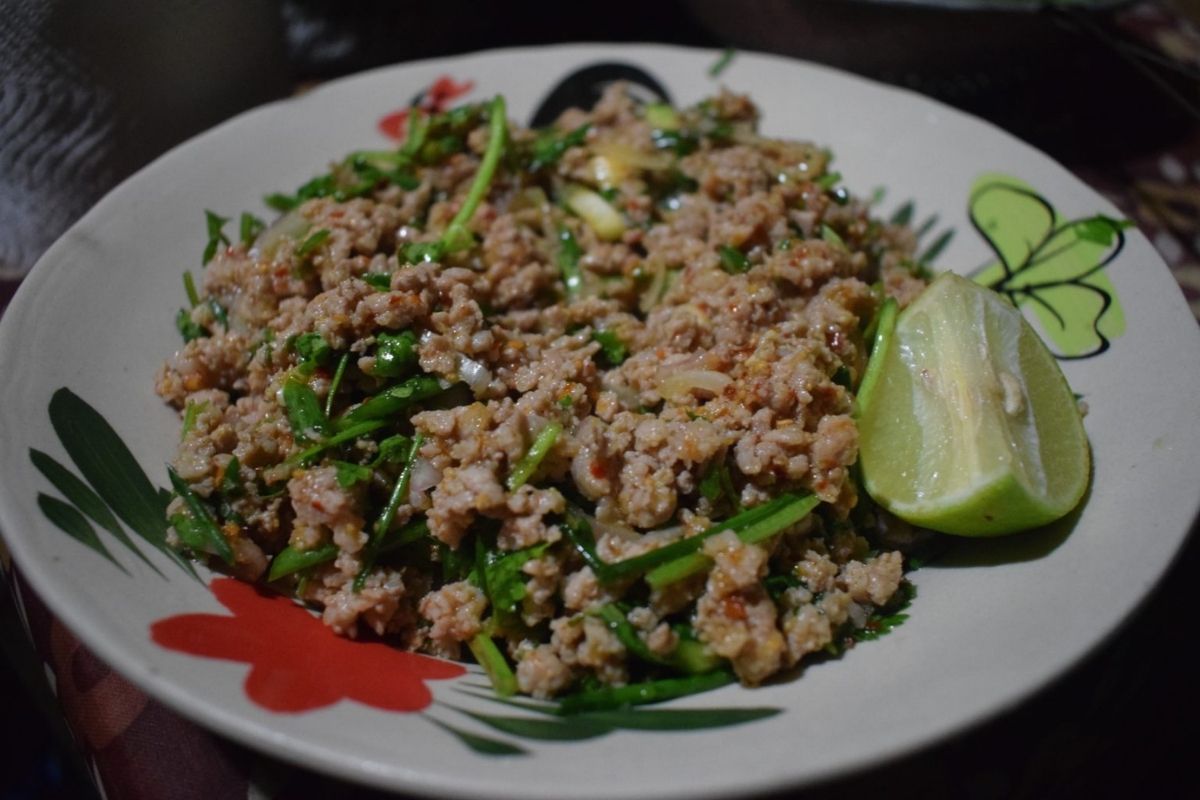
Laap Isaan (Source: makethatdish)
Where to Eat the Best Laos Larb on Your Trip (With Local Pricing!)
Now the next question is: where can you try the best larb in Laos? Lucky for you, we’ve mapped out the top restaurants across Vientiane, Luang Prabang, and Vang Vieng—each offering its own unique take on laap laos food, at prices that’ll keep both your taste buds and wallet happy.
Vientiane
|
Restaurant
|
Address
|
Price (₭)
|
Hours
|
Highlights
|
|
Pa Kham Tanh
|
Rue ASEAN 397
|
35,000–45,000
|
Mon–Fri, 09:00–14:00
|
Raw larb with bile – ultra-authentic
|
|
Tamnak Lao
|
That Luang Patuxai
|
40,000
|
Daily, 10:30–22:30
|
Garden setting, classic family recipe
|

Larb At Pa Kham Tanh (Source: discoveryindochina)
Luang Prabang
|
Restaurant
|
Address
|
Price (₭)
|
Hours
|
Highlights
|
|
Xieng Thong Phonsavanh
|
Peninsula
|
40,000
|
11:00–23:00
|
Mekong fish larb, chef-guided experience
|
|
Paste at The Apsara
|
Kingkitsarath
|
60,000–80,000
|
11:00–22:00
|
Gourmet boutique larb, refined presentation
|
|
3 Nagas Restaurant & Bar
|
Sofitel, Sakkaline Rd.
|
250,000 (set)
|
18:00–22:00
|
Degustation with live music, luxury setting
|
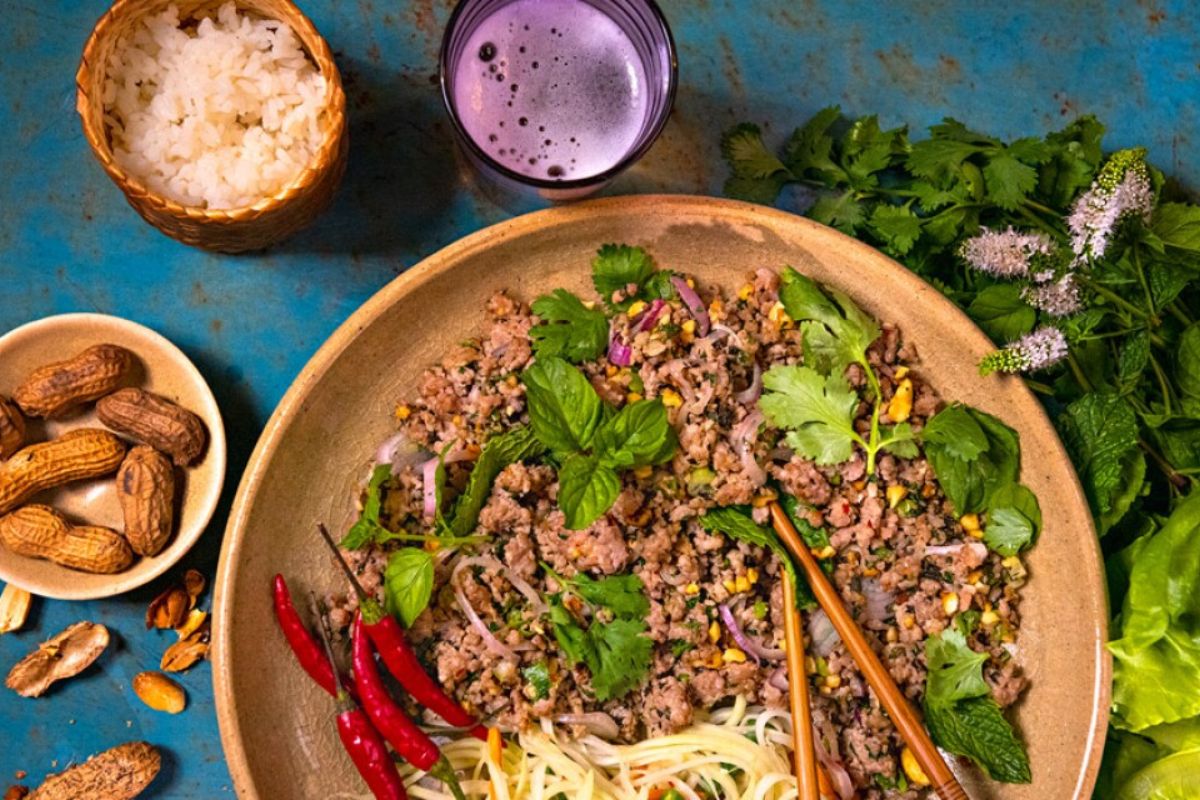
Larb At Paste at The Apsara (Source: hallmarkchannel)
Vang Vieng
|
Restaurant
|
Address
|
Price (₭)
|
Hours
|
Highlights
|
|
Vang Lao Restaurant
|
Sisavang Street
|
30,000
|
10:00–21:00
|
Larb + BeerLao combo, traveler-favorite spot
|
|
Le Repère du Laos
|
Sisattanak, Vientiane Capital
|
35,000
|
07:00–23:30
|
Open all day, time-honored flavors
|
Every one of these venues is featured in Impress Travel’s curated Laos Food Tours. With our expert local guides, you won’t just dine—you’ll discover the stories behind each recipe, learn how to order like a local, and even get a peek into traditional kitchen techniques that make each dish memorable.
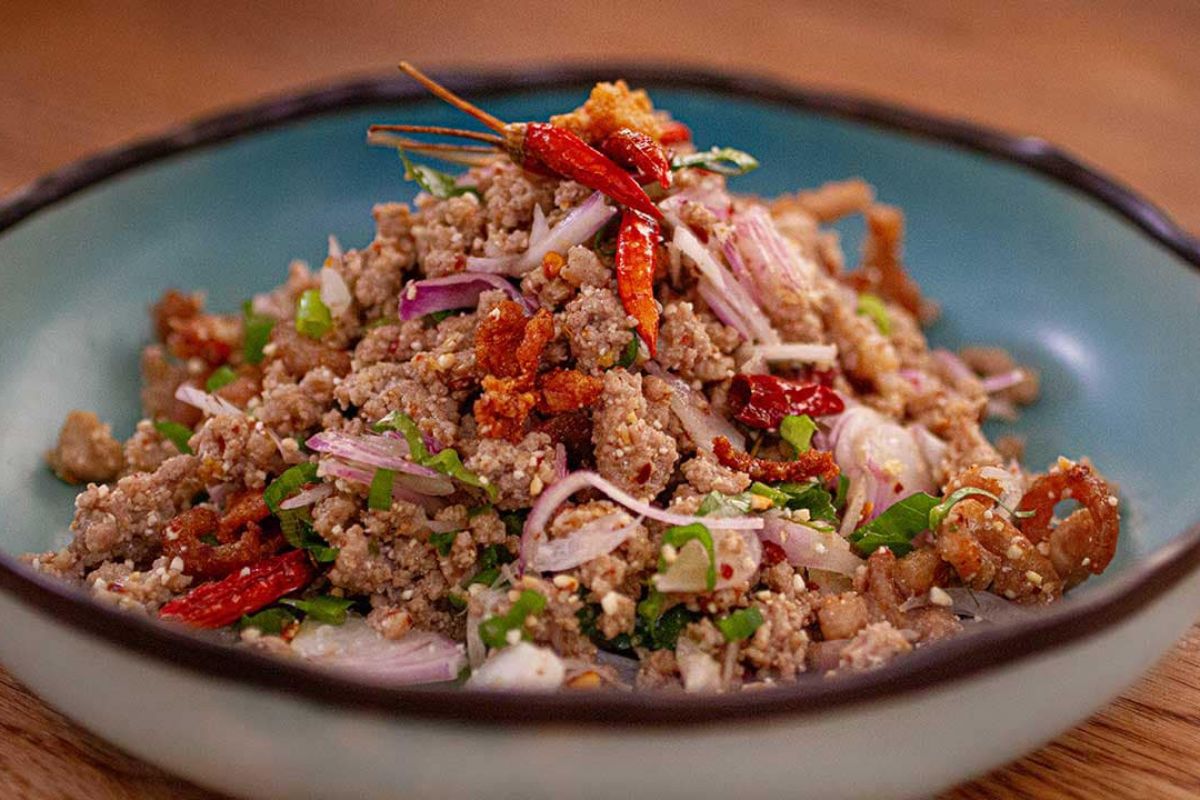
Larb At Vang Lao Restaurant (Source: thaifoodmaster)
Safe & Informed Eating: Health Advisories + Customization Tips
While laos larb is a flavor-packed adventure, it’s essential to enjoy it safely and responsibly—especially when you’re new to some of its bold ingredients like fermented fish sauce or raw variants. Here’s how to tailor your larb experience to your health needs and preferences.
For Travelers with Seafood Allergies
Many larb recipes use padaek (a fermented fish sauce). Always ask if it’s included, or request substitution with soy sauce when possible.
For Kids
Yes, children can enjoy laap laos, too! Just ask for no chili, a little extra lime juice for tang, and ensure the meat is well-cooked and finely minced.
For Elders or Those with Dietary Concerns
Larb can be made low in salt and acidity—just request less fish sauce and lime juice. This helps protect dental and digestive health without compromising too much on flavor.
Simple Phrases to Order with Confidence
Here’s your traveler’s toolkit for ordering larb your way:
- “Laap, no spicy, less fish sauce, extra lime, please.”
And remember, with Impress Travel, you’re never alone in navigating menus or street stalls. Our guides assist with translations, recommend safe places to try larb, and ensure you enjoy Laos country food with peace of mind and full flavor.
How to Eat Larb Like a Local
Eating laos larb is more than just tasting—it’s participating in a ritual of hospitality, culture, and community. And it all starts with sticky rice!
Here’s how locals do it: Take laotian sticky rice → roll into a ball → scoop larb → eat with hands
Yes, you eat it with your fingers. Take a small handful of sticky rice, roll it into a compact ball, and use it to scoop up your larb. This method not only brings you closer to the dish—it reflects the communal food traditions of Laos that are centered around family, sharing, and closeness.
In our Impress Travel village immersion tours, we guide you through this eating etiquette firsthand. You’ll learn the cultural meaning behind each motion and enjoy larb the way it’s been enjoyed for generations—seated on mats, with laughter, stories, and shared plates under the open sky.
It’s these personal, hands-on moments that make laotian salad more than a meal—it becomes a memory.
Bonus: Classic One-Day Itinerary in Vientiane & Try Classic Laos Larb with Impress Travel
Duration: ~10 hours | Best for: Culture lovers, foodies, first-time visitors
Includes: Temples, museums, parks, cafés, and Laos Larb tasting experiences
|
Time
|
Activity
|
Highlight
|
|
08:00–09:00
|
Visit Wat Sisaket
|
Vientiane’s oldest temple with over 6,000 Buddha statues
|
|
09:15–10:15
|
Explore Ho Phrakeo Museum
|
Historical shrine of the Emerald Buddha, now an artifact museum
|
|
10:30–12:00
|
Discover the Lao National Museum
|
Learn about colonial history, independence, and Lao heritage
|
|
12:15–13:30
|
Lunch at Pa Kham Tanh Laap Restaurant
|
Try classic Laos Larb with bile or herbs at a family-run favorite
|
|
14:00–15:30
|
Walk and relax in Fa Ngum Park
|
Riverside paths, king statues, and green lawns by the Mekong
|
|
15:45–16:30
|
Enjoy coffee at Naked Espresso Garden
|
Locally roasted beans and garden views near the city center
|
|
18:00–19:30
|
Dinner at Tamnak Lao Restaurant
|
Refined minced meat salad (Larb) in a garden atmosphere
|

Wat Sisaket (Source: wikipedia)
Why Book Your Culinary Trip to Laos with Impress Travel?
With over 15 years of experience in Southeast Asia, Impress Travel is a cultural storyteller, food lover, and your trusted travel companion in Laos and Vietnam.
Why choose us for your Laos food larb adventure?
- We offer guided food experiences led by passionate locals who know every hidden larb hotspot.
- Our itineraries feature cooking workshops, market walks, and tasting sessions in cities and villages alike.
- We partner with authentic chefs, family-run kitchens, and sustainable producers to ensure authenticity, safety, and flavor in every bite.
From ancient temples to riverside meals, every moment with Impress Travel Laos Tours brings you closer to the heart of Laos food larb. You’ll learn the roots, taste the styles, and dine like a local—with laap laos as your cultural compass. Whether it’s cooking with villagers or savoring larb at sunset, this is more than a meal. It’s an experience of flavor, heritage, and connection—the Impress way.
FAQs: Everything You Want to Know About Laos Larb
Is Larb raw? Is it safe to eat?
Traditionally, larb can be raw (especially buffalo larb in rural villages), but most tourist restaurants serve it cooked. Always ask your guide or server. At Impress Travel, we only recommend places with proper food safety.
What kinds of meat are used in Laotian larb?
Common choices include chicken, pork, beef, duck, and fish. Vegetarian options with mushrooms or tofu are increasingly available and equally delicious.
How do I say “not spicy” when ordering?
Simply say: “Bo phet” (ບໍ່ເຜັດ) in Lao. Add “less fish sauce” or “extra lime” if you want to adjust the flavor balance.
Where’s the best place to try larb in Luang Prabang or Vientiane?
Check out our list in Section V! From the rustic charm of Pa Kham Tanh to the fine dining elegance of Paste at The Apsara, our favorite spots are featured highlights of Impress Travel food tours.


























